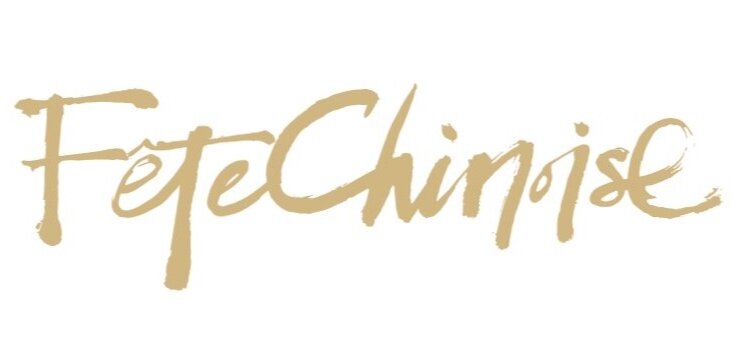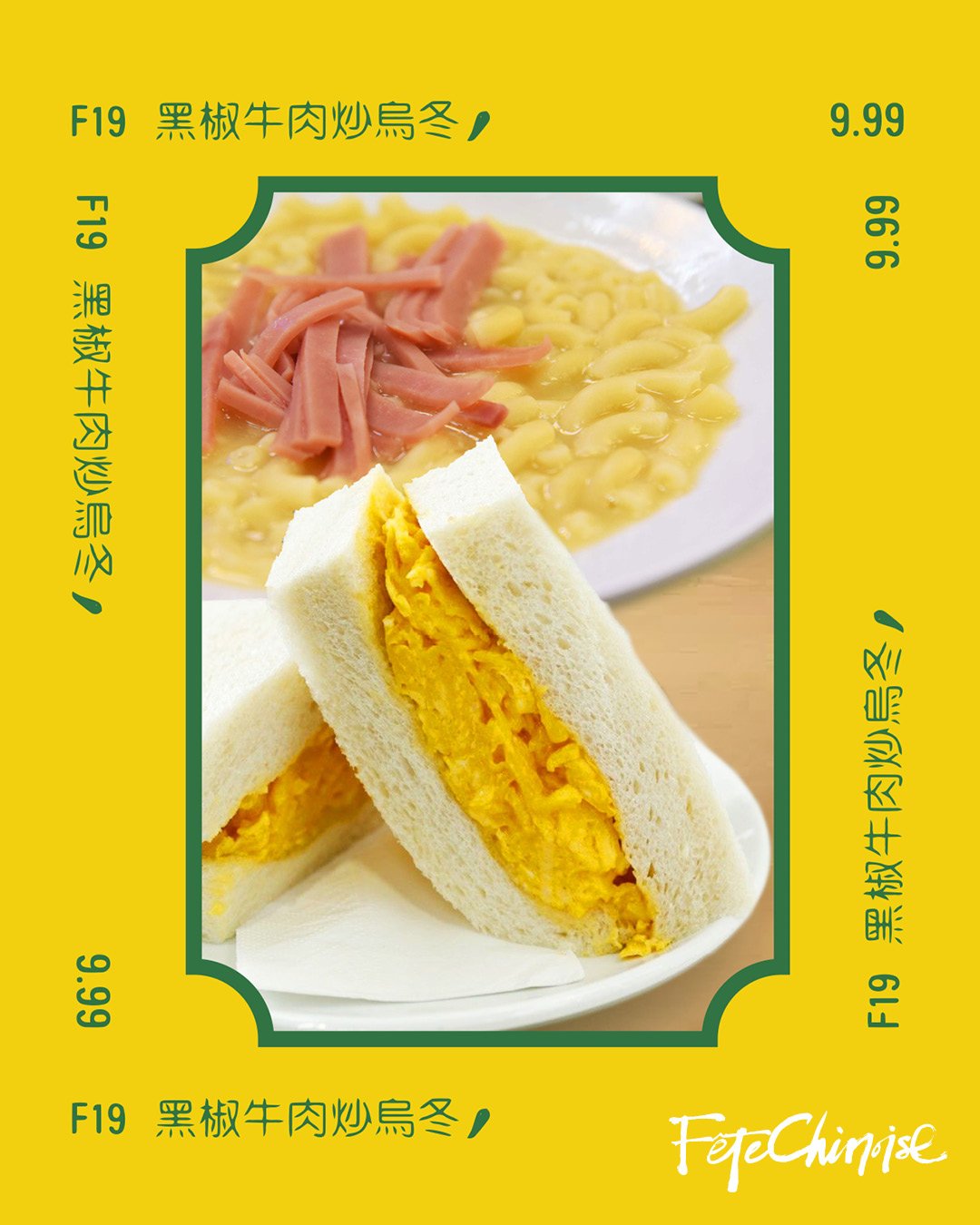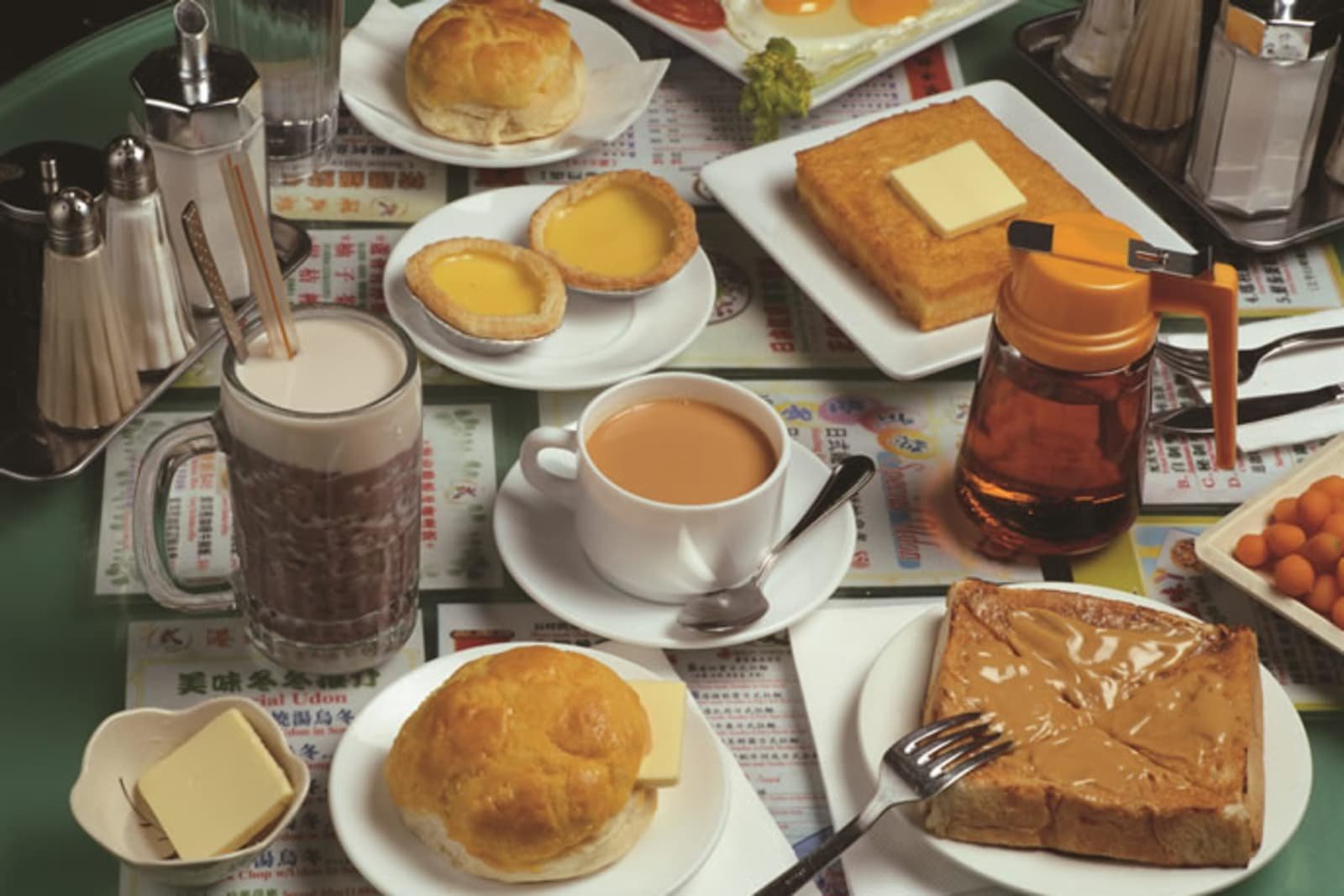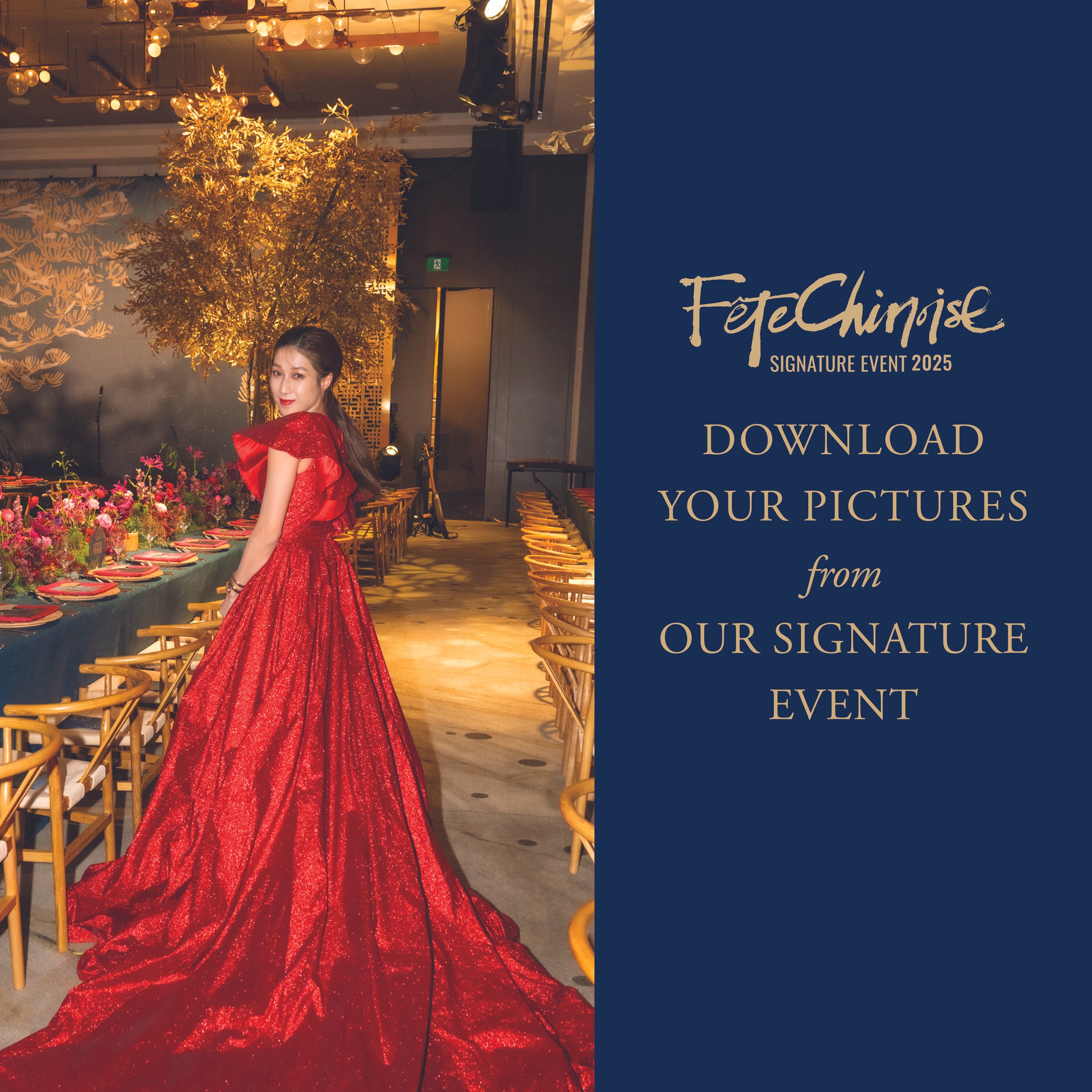The Enduring Legacy of Hong Kong-Style Cafés 茶餐廳傳承港式風味
Written by Sharifa Khan | Edited by Thomas Su
Translated by Mung Ting Chung
AS FEATURED IN EDITION NO. 4 OF FÊTE CHINOISE MAGAZINE
Photo reposted from MY HK TOUR
Oh, to reminisce about the lovely warm aroma of the Hong Kong-styled French Toast! I remember, as I walked into the bistro to the smell of freshly fried toast, butter, and sweet condensed milk emanating from the kitchen — there’s simply nothing like it. There would be no less than 50 varieties of freshly baked buns and cakes to choose from, replicating high-end Western pastries, but all with local Hong Kong sensibilities on them. From egg tarts to buns stuffed with curried beef, to Hong Kong’s version of the Swiss roll — everyone had their favourites.
I still chuckle when I think of a local staple, “Pineapple Bread,” which as it turns out, contains no pineapple in it. The pastry’s namesake is owed to its outward appearance: the crust’s rough-looking texture loosely resembling the skin of a pineapple. As with everyone else in the community, we had our own comfort foods there: baked curry rice; pork chops with spaghetti; and the traditional macaroni in consommé soup.
香港有很多我喜歡的東西,但我必須說,我最難忘的還是小時候在上學前跟媽媽上茶餐廳吃早餐的回憶。「茶餐廳」,顧名思義就是「茶」的「餐廳」。這是香港的一個標誌,它代表的不僅僅是一個傳統,而是一種日常文化。往日擺攤在露天地方的小食,現在已轉變為一個可以容納二、三十人的小型餐廳了。茶餐廳不單伴隨著大家成長,而且時至今日仍然興盛,在香港的每條大街小巷都可以輕易找到它們的蹤影。茶餐廳的出現原是為了把高不可及的英式食物變得更平易近人,最後卻搖身一變,結合了英國殖民地飲食和亞洲風味的獨特飲食文化。
噢,一想起那厚厚的、用作做法式多士的炸麵包的誘人香氣,便知道這是地道的香港風味!伴著那一大坨牛油和甜煉奶奉上桌,沒有別的美食可以比擬!超過五十種的食物,仿照著西式糕點,但又帶有香港自己的風味。由蛋撻、咖哩麵包、到香港版的瑞士捲 — 每個人都可以找到適合自己口味的美食。
每次想起「菠蘿包」,我還是會忍不住笑,因為裡面根本就找不到什麼水果。它的取名來自於它的表面粗粗硬硬的,跟菠蘿的外皮相似。我們也有讓人偶爾放縱的食物,例如焗烤咖喱飯、豬排意大利粉,更不可錯過的是放在清湯裡的通心粉。
我一直很喜歡吃茶餐廳的「蛋治」(雞蛋三文治)。它跟我們一般在加拿大吃到的很不一樣。除了厚麵包外,裡面的蛋既濕潤又鬆軟,實在太好吃了!其它受歡迎的食物包括「粟米牛治」(玉米牛肉三文治)、「碎牛粥」(碎牛肉粥)。他們甚至有賣點心!
I always enjoyed the cha chaan teng egg sandwich. Sounds simple, but they are very difficult from how it is prepared in Canada. Beyond the thick but delicate bread, the egg inside was always perfectly moist and fluffy. Other popular menu items include: corn beef sandwiches, minced beef congee; and even dim sum.
What is interesting is that the simple dishes of the cha chaan teng have not found their way to the home. We feel that the time and effort needed to prepare the dishes is disproportionate to the affordable prices at cha chaan teng restaurants. And as a result, the legacy of the cha chaan teng continues with our support. This culinary specialty continues to be passed on, not by culinary schools but rather, through the continued existence of these restaurants.
Turning to drinks, there are 4 staples. As a child, my mom and I would have the famous Hong Kong-styled tea. It was strained with a nylon net, similar to that of stockings. Although tea was a valuable commodity in the Qing dynasty, it was re-appropriated by the Hong Kong locals in the form of milk tea. My favourite beverage at the cha chaan tang, along with many who share the collective memories of the restaurant, was Horlicks. It was served piping hot in a tall drinking glass with a stirspoon. Ovaltine was another staple. Prepared and served in a similar fashion as Horlicks, this cocoa drink continues to form part of the daily regiment of local cha chaan teng goers.
Aside from the Hong Kong milk tea, a beverage which evidences the colonial legacy and influence, Ribena, a black currant drink, which bore the Queen’s Emblem and received a Royal Warrant of Appointment. In my child-like wonder, I used to believe that Ribena was the Queen’s favourite beverage, given the emblem on its packaging. Ribena, along with milk tea, represent the transmission, integration, and acceptance of British culinary tastes in the local Hong Kong palette, which continues to be perpetuated through cha chaan tengs.
Sponsored by FERRIS WHEEL PRESS
有趣的是這些食物好像並不適合在家裡做。我們大部份的人都不知道怎麼在家裡做出同樣的食物,又或者說是因為太複雜太麻煩了。或許正因如此,茶餐廳的風味因為食客們的支持而一直承傳下去。再說,茶餐廳的消費平易近人,顧客根本無需掂量著價錢,我們直接去茶餐廳品嚐這些特製的食物就好了。有趣的是,也沒有什麼正式的廚藝學院在教這些食物怎麼做 — 它們的做法都是在餐廳裡靠口耳相傳延續下來的。
以前我媽媽通常就坐在我旁邊,點一杯用濃濃的錫蘭紅茶泡出來的特色奶茶。它是用尼龍網(跟絲襪類似)把茶過濾出來的!雖然是英國人把「奶茶」帶到香港(對我們傳統上只把茶單純地泡來喝而言,這無疑是一種外來文化),但我們最後還是把它改造為符合我們口味的東西。我在茶餐廳最喜歡點的飲料是好立克,一種用麥芽糖做的飲料。它裝在高身杯子裡,滾燙地送上桌,用湯匙一直攪動,直到它不燙為止。阿華田也是茶餐廳的另一款招牌飲料:烤過的可可加入熱牛奶,倒在茶杯裡奉上。
另一種陪著我長大的是利賓納,黑加侖子口味的飲料,有著滿滿的維他命。我還記得它的包裝 — 上面有著英女皇的標誌。小時候的我總以為那是英女皇也愛喝它的意思。因著香港的殖民背景,這標誌無疑賜予了這些皇室認可的產品一種光環。
PHOTO: REPOSTED FROM INSTAGRAM @MICHELLEYEOH_OFFICIAL
In Hong Kong, cha chaan teng bistros open around 6 am and remain open late into the night. Family, friends, and work colleagues congregate in the cha chaan teng around the clock as this ritual is an integral part of daily life. It’s not just the food; its the feeling, it’s the community. It was a place where waiters knew the names of patrons. Needless to say, the cha chaan teng is an important place of congregation in the Hong Kong community and to a lesser extent, to the Hong Kong diaspora.
In the first few years after immigrating to Canada, I longed for a piece of home – the cha chaan teng. I distinctly remember searching for one here; I missed it terribly. I found a “chaan teng” in Toronto’s Chinatown and was quite excited for good reason. The egg sandwiches and drinks were not as I remembered. Sadly, it would require some time before I found a cha chaan teng that provided that familiar sense of home and community.
As more people from Hong Kong have emigrated, the cha chaan teng experience has followed. That sense of home arrived here in the form of the cha chaan teng. What used to be a unique culinary experience found only in Hong Kong is now a shared legacy in many parts of the world. Many locations have popped up in Scarborough, Richmond Hill, and Markham, offering that authentic taste that we all crave. And with that, a sense of continuing the legacy beyond Hong Kong.
Photo reposted from foodie hong kong
Photo reposted from the LOOP HK
在香港,茶餐廳在清晨六時便開門營業了,一直到深夜才休息。無論你是要跟父母一起吃早餐、放學後跟朋友享受下午茶時光,還是跟同事吃宵夜,茶餐廳都是你每日生活裡的最佳良伴。我們吃的不只是食物,更是氛圍。我們都有自己熟門熟路的一家茶餐廳,裡面的侍應都認得我們,甚至變成了朋友。
如果把時間快轉到幾年前我搬到加拿大的時候,我記得當時我到處在找哪裡有茶餐廳,因為實在太想念了!最後我找到了多倫多唐人街的一家餐廳。一開始我還很興奮,可惜很快就失望而回,因為那只不過是一家有個華人做老闆的快餐店而已。那些牛肉和雞肉包又大又硬,一點都不像我以前吃到的鬆軟可口,而腸粉也一點都不滑。最令人失望的是,他們店裡連港式奶茶和好立克也欠奉。
說到這裡,不得不提一個好消息:從前這種只能在香港找到的飲食文化現在世界各地都可以找到它的影子了。隨著眾多香港人移民海外,茶餐廳風味也隨著他們越洋散佈各地。在Scarborough 那邊也慢慢出現了不同的茶餐廳,Richmond Hill 和 Markham 都可以找到我們垂涎欲滴的家鄉口味了。這更意味著,茶餐廳的風味已經傳播到香港以外的地方了。
SPonsored by FERRIS WHEEL PRESS

















From April 11 to 13, the Grand Quay in Montreal’s Old Port will host the highly anticipated 2025 edition of Plural, Canada’s leading contemporary art fair. Formerly known as Papier, the fair began with a focus on works on paper and has since evolved into a reimagined event that reflects the multiplicity of voices, practices, and mediums shaping contemporary Canadian art. Amongst the standout projects is Like raindrops rolling down new paint, Karen Tam’s evocative work, presented by The National Bank and staged in the Espace Banque Nationale.